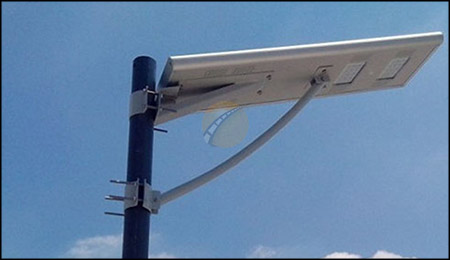Comparing Solar Street Lights and Ordinary Street Lights: Key Differences and Advantages
Sep 20, 2024
Street lighting is an essential part of urban infrastructure, contributing to road safety, security, and the overall aesthetic of public spaces. Traditionally, these lights were powered by grid electricity, but with technological advancements and a focus on sustainability, solar-powered street lights have emerged as a popular alternative. While both types serve the same fundamental purpose, they operate differently and offer distinct advantages and disadvantages. This article explores the key differences between solar street lights and ordinary street lights in terms of energy source, installation, maintenance, cost, and environmental impact.
Both solar and ordinary street lights have their advantages and disadvantages. Solar street lights are energy-efficient, environmentally friendly, and cost-effective in the long run, making them an ideal choice for areas looking to reduce their carbon footprint and energy expenses. On the other hand, ordinary street lights offer reliability and consistent performance, especially in urban environments with a stable power grid. The choice between the two depends on factors such as location, budget, environmental goals, and long-term energy strategies. As the world continues to prioritize sustainability, solar street lights are becoming an increasingly attractive alternative to conventional lighting systems.
1. Energy Source
The most significant difference between solar and ordinary street lights is their energy source.- Solar Street Lights: These lights are powered by energy harnessed from the sun through photovoltaic (PV) panels. During the day, the PV panels convert sunlight into electricity, which is stored in rechargeable batteries. This stored energy is used to power the lights at night.
- Ordinary Street Lights: Powered by the traditional electrical grid, ordinary street lights rely on non-renewable energy sources such as coal, natural gas, or nuclear power. They consume electricity continuously as long as they are switched on.
2. Installation Process
- Solar Street Lights: Installation is relatively simple and less labor-intensive because they are not connected to the electrical grid. They can be installed in remote areas where extending the electrical grid would be difficult or costly. All that is required is the light pole, the solar panel, and the battery unit.
- Ordinary Street Lights: Installation of conventional street lights requires an extensive electrical infrastructure, including wiring, transformers, and connection to the power grid. This makes installation more complex, time-consuming, and expensive, especially in areas where grid access is limited.
3. Maintenance
- Solar led Street Lights: Maintenance for solar street lights primarily involves cleaning the solar panels to ensure they are free of dust, debris, or snow. Battery replacement may also be necessary every 5 to 10 years, depending on the quality of the batteries used. Since they are independent of the grid, solar lights are less affected by power outages.
- Ordinary Street Lights: Conventional lights require regular maintenance to ensure electrical wiring, light bulbs, and other components are functioning properly. They may also require more frequent attention due to their reliance on the grid, making them susceptible to power outages, surges, or short circuits.
4. Cost Considerations
- Solar Street Lights: Although the initial investment in solar street lights is higher due to the cost of solar panels and batteries, they have virtually zero operational costs since they rely on free solar energy. Over time, they provide significant savings, especially in areas where electricity costs are high or grid installation is expensive.
- Ordinary Street Lights: The upfront cost for conventional street lights is lower, but their operational costs are ongoing. These include electricity bills and routine maintenance, which add up over time. Additionally, the cost of connecting to the grid in remote locations can be prohibitively expensive.
5. Environmental Impact
- Solar Street Lights: Solar street lights have a much lower environmental impact compared to conventional lights. They use renewable energy, which reduces dependence on fossil fuels and helps lower carbon emissions. Furthermore, the lack of a need for extensive wiring reduces land disruption and resource use.
- Ordinary Street Lights: These lights contribute to greenhouse gas emissions due to their reliance on non-renewable energy sources. Their extensive wiring systems and electrical components require significant materials and energy during installation and maintenance, further increasing their environmental footprint.
6. Performance in Extreme Conditions
- Solar Street Lights: Solar lights can be affected by weather conditions, particularly in regions with limited sunlight, heavy snowfall, or extreme cold. However, modern solar street lights are designed with enhanced battery capacities and energy storage solutions that allow them to function even during cloudy days. In addition, some models come with heating elements to prevent snow or ice buildup on the panels.
- Ordinary Street Lights: Conventional lights are generally more reliable in extreme weather conditions, provided there is a continuous electricity supply. However, during power outages caused by storms or natural disasters, they become non-functional unless backup generators are available.
7. Flexibility and Versatility
- Solar Street Lights: Since solar road lights are independent of the electrical grid, they can be installed virtually anywhere, from city streets and highways to rural or off-grid areas. They are ideal for developing regions or places with unstable power supplies. This versatility makes them a practical solution for both temporary and permanent lighting needs.
- Ordinary Street Lights: These lights are bound to locations with access to the electrical grid. Installing them in remote or off-grid locations is challenging, and they cannot easily be relocated once installed.

.jpg)
.jpg)
.jpg)



